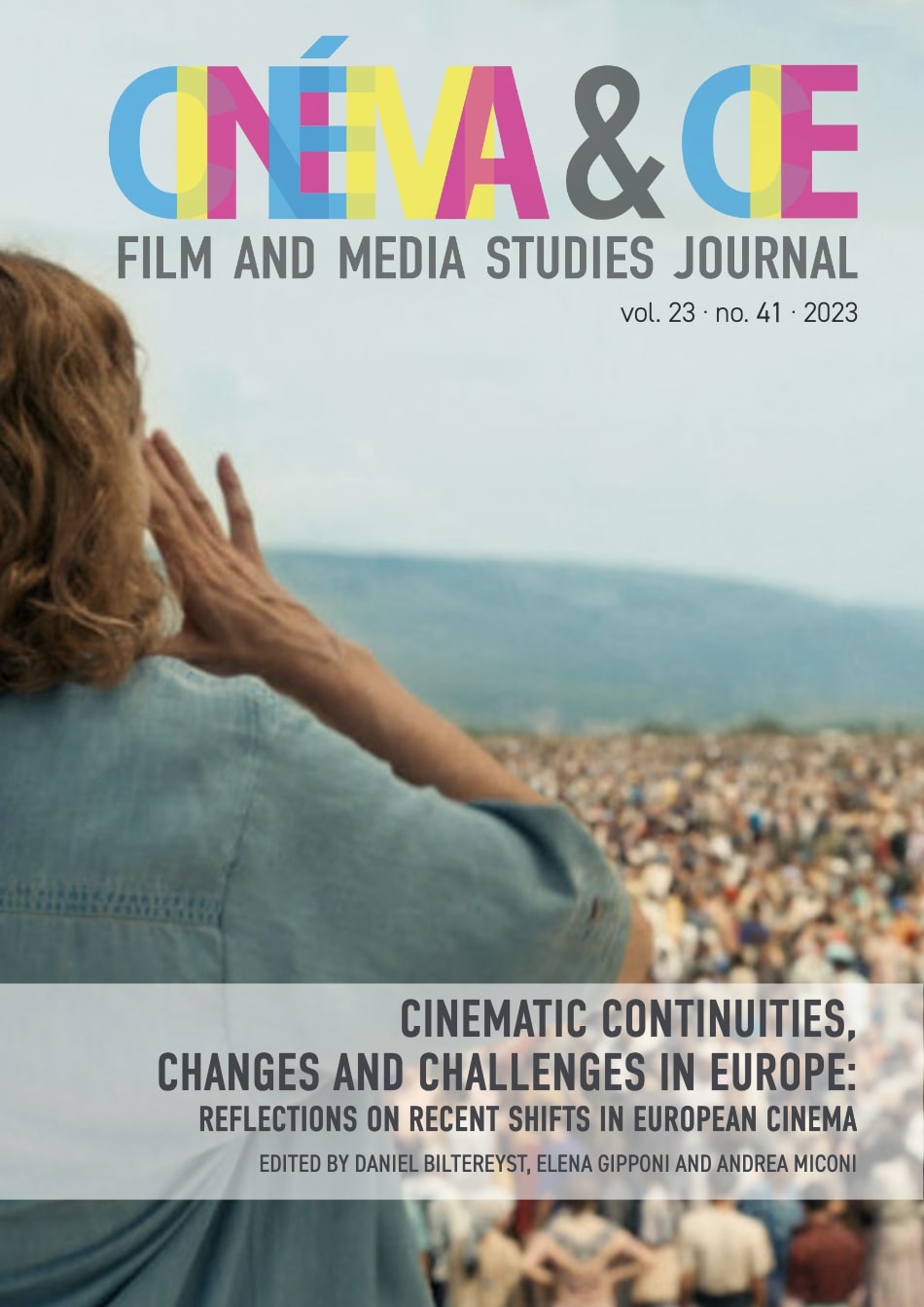Decentering Nations: The Role of National Institutes for Culture in the Promotion and Circulation of European Cinema
DOI:
https://doi.org/10.54103/2036-461X/20641Keywords:
Post-nationalism, Transnational Identity(ies), Policy Making, European Institutes of Culture, Film DiplomacyAbstract
When considering the circulation of European films across Europe within a post-national framework, an investigation on the role of national institutes for culture could offer a particular take on the “Europeanisation” (Carpentier 2021) process through cinema-related initiatives. If they were conceived to promote national heritage and values, they have found themselves in the ambivalent position of pursuing their main goal within a changing institutional and cultural context that requires more integrated approaches, since the beginning of the 1990s, namely after the end of the Cold War. Notably, since the creation of the European National Institutes for Culture network (hereafter EUNIC) in 2006, they have been asked to cooperate and to valorise the heterogeneity and multiplicity of European subjectivities and communities, according to the motto “unity in diversity” (Liz 2016; Bondebjerg, Novrup Redvall, and Higson 2014). In particular, this research concentrates on the circulation, among European and Italian institutes for culture, of films that deal with European issues, and has reflected on how they affect the construction of a transnational European identity by addressing sensitive topics.
References
Avezzù, Giorgio. 2022. L’Italia che guarda. Geografie del consumo audiovisivo. Rome: Carocci.
Biltereyst Daniel, and Eduard Cuelenaere. WP1.3. Region Report: European Movie Market Report. EUMEPLAT project.
Brunetta, Gian Piero. 2020. L’Italia sullo schermo. Come il cinema ha raccontato l’identità italiana, Rome: Carocci.
Bondebjerg, Ib, Eva Novrup Redvall, and Andrew Higson, eds. 2014. European Cinema and Television. Cultural Policy and Everyday Life. New York: Palgrave Macmillan.
Comand, Mariapia, and Roy Menarini. 2014. Il cinema europeo. Bari: Laterza.
Carpentier, Nico. 2021. “The European Assemblage: A Discursive-Material Analysis of European Identity, Europaneity and Europeanisation.” Filosofija. Sociologija 32 (3): 231–39. DOI: https://doi.org/10.6001/fil-soc.v32i3.4495.
Ciaglia, Sarah, Clemens Fuest, and Friedrich Heinemann. 2018. What a Feeling?! How to Promote ‘European Identity’. EconPol Policy Report 9. October 2018.
Curtin, Michael, Jennifer Holt, and Kevin Sanson, eds. 2014. Distribution Revolution. Conversations about the Digital Future of Film and Television. Oakland: University of California.
Elsaesser, Thomas. 2014. “European Cinema into the Twenty-First Century: Enlarging the Context?” In The Europeanness of European Cinema. Identity, Meaning, Globalisation, edited by Mary Harrod, Mariana Liz, and Alissa Timoshkina, 17–32. London-New York: I. B. Tauris.
Elsaesser, Thomas. 2005. European Cinema. Face to Face with Hollywood. Amsterdam: Amsterdam University Press.
Garofalo, Damiano, Dom Holdaway, and Massimo Scaglioni, eds. 2018. “The International Circulation of European Cinema in the Digital Age.” Comunicazioni Sociali 40 (3).
Gott, Michael, and Todd Herzog. 2015. East West and Centre. Reframing Post-1989 European Cinema. Edinburgh: Edinburgh University Press.
Halle, Randall. 2014. The Europeanization of Cinema. Interzones and Imaginative Communities. Urbana-Chicago-Springfield: University of Illinois Press.
Harrod, Mary, Mariana Liz, and Alissa Timoshkina, eds. 2014. The Europeanness of European Cinema. Identity, Meaning, Globalisation. London-New York: I. B. Tauris.
Holdaway, Dom, and Massimo Scaglioni. 2019. “Studiare la circolazione. Metodologie e problematiche di un progetto di ricerca.” In Cinema e identità italiana, edited by Stefania Parigi, Christian Uva, and Vito Zagarrio, 403–24. Rome: RomaTre Press.
Holdaway, Dom, and Massimo Scaglioni. 2018. “From Distribution to Circulation Studies: Mapping Italian Films Abroad.” Comunicazioni Sociali 40 (3), 341–55. DOI: https://doi.org/10.26350/001200_000024.
Jäckel, Anne. 2004. European Film Industries. London: British Film Institute.
Liz, Mariana. 2016. Euro-Visions. Europe in Contemporary Cinema. New York-London: Bloomsbury.
Lobato, Ramon. 2012. Shadow Economies of Cinema: Mapping Informal Film Distribution. London: BFI.
Martel, Kerstin, and Ljiljana Simic. 2018. “Building a Joint Approach in European Union Cultural Diplomacy: From Soft Power to Intercultural Cooperation?” Revista Chilena de Relaciones Internacionales 2 (1): 27–54.
Noto, Paolo. 2019. “Il cinema italiano negli Istituti Italiani di Cultura all’estero. Alcuni casi di studio.” In Cinema e identità italiana, edited by Stefania Parigi, Christian Uva, and Vito Zagarrio, 425–32. Rome: RomaTre Press.
Noto, Paolo, and Luca Peretti. 2016. “The Diplomatic Promotion of Italian Cinema in English-Speaking Countries.” Comunicazioni Sociali 38 (3): 398–411.
Paganoni, Maria Cristina. 2015. “Cultural Heritage in the Discourse of European Institutions.” LCM Languages Cultures Mediation 2 (2): 117–30.
Parigi, Stefania, Christian Uva, and Vito Zagarrio, eds. 2019. Cinema e identità italiana. Rome: RomaTre Press.
Rivi, Luisa. 2007. European Cinema after 1989. Cultural Identity and Transnational Production. New York: Palgrave Macmillan.
Scaglioni, Massimo, ed. 2020. Cinema made in Italy. La circolazione internazionale dell’audiovisivo italiano. Rome: Carocci.
Sorlin, Pierre. 1991. European Cinemas, European Societies, 1939–1990. London-New York: Routledge.
Downloads
Published
How to Cite
Issue
Section
License
Copyright (c) 2024 Annalisa Pellino

This work is licensed under a Creative Commons Attribution 4.0 International License.





